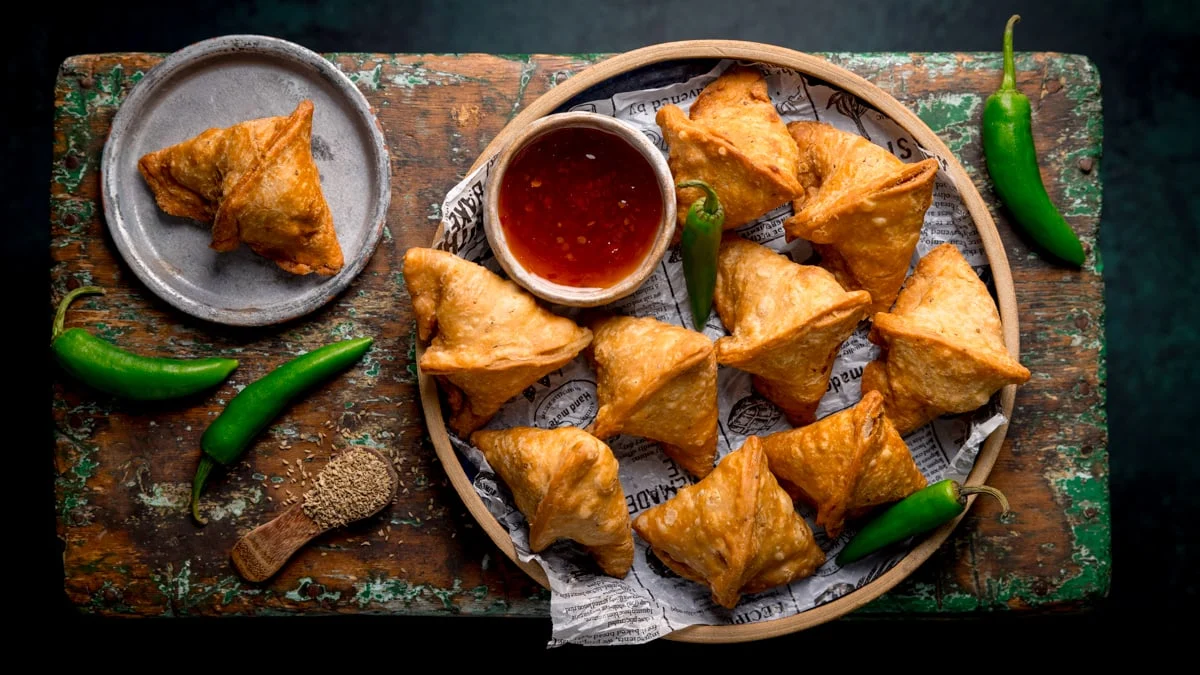Samosas, those delightful pockets of savory goodness, are a beloved treat across the globe. Originating from the Indian subcontinent, these crispy pastries have captured the hearts and taste buds of people worldwide. Whether enjoyed as a street food snack, appetizer, or part of a festive spread, samosas offer a delightful blend of flavors and textures that make them irresistible. In this comprehensive guide, we’ll delve into the rich history of samosas, explore different variations from around the world, and provide step-by-step instructions for making them at home.
I. The Origins of Samosas:
A. Historical Background:
- Origins in the Indian Subcontinent: Tracing the earliest mentions of samosas in Indian literature and culinary traditions.
- Influence of Persian Cuisine: Examining the potential Persian influence on the development of samosas, including similar pastries like sambusak.
B. Evolution Over Time: - Regional Variations: How different regions within the Indian subcontinent have adapted the samosa to reflect local tastes and ingredients.
- Spread to Other Cultures: Exploring how samosas made their way to other parts of Asia, Africa, and beyond through trade and migration.
II. Samosas Around the World:
A. Indian Samosas:
- Traditional Fillings: Classic combinations like spiced potatoes, peas, and aromatic spices.
- Regional Specialties: Highlighting variations like Punjabi samosas with a thicker crust and aloo tikki samosas from Uttar Pradesh.
B. Middle Eastern Samosas: - Lebanese Fatayer: Similarities and differences between Lebanese spinach and meat-filled pastries and Indian samosas.
- Turkish Borek: Comparing Turkish borek with samosas, focusing on fillings and pastry types.
C. African Samosas: - Kenyan Mandazi: Exploring the Kenyan version of samosas, often made with a sweeter dough and filled with meat or vegetables.
- South African Vetkoek: Discussing how South African vetkoek shares similarities with samosas in terms of shape and fillings.
III. The Art of Making Samosas:
A. Ingredients:
- Dough: Choosing the right type of dough, whether homemade or store-bought, and tips for achieving the perfect texture.
- Fillings: A variety of options for both vegetarian and non-vegetarian fillings, along with spice combinations to enhance flavor.
B. Assembly: - Rolling and Cutting: Step-by-step instructions for rolling out the dough and cutting it into triangles or circles.
- Filling and Sealing: Techniques for evenly filling the samosas and sealing them securely to prevent leaks during frying.
C. Cooking Methods: - Deep Frying: Traditional frying methods for achieving a crispy golden exterior.
- Baking: Healthier alternatives for those looking to reduce oil consumption, with tips for achieving a similar texture.
IV. Serving and Pairing:
A. Accompaniments:
- Chutneys: Recipes for classic green chutney and tangy tamarind chutney to complement the flavors of samosas.
- Yogurt Dips: Variations of yogurt-based dips infused with herbs and spices for a cooling contrast.
B. Beverage Pairings: - Chai: The quintessential pairing for samosas, with suggestions for traditional and flavored chai blends.
- Beer and Wine: Exploring the versatility of samosas as a snack for pairing with a range of alcoholic beverages.
V. Conclusion:
A. The Enduring Appeal of Samosas: Reflecting on the universal appeal of samosas and their ability to bring people together across cultures and continents.
B. Encouragement to Explore: Encouraging readers to experiment with different fillings, cooking techniques, and serving styles to discover their own unique twist on this timeless snack.
In this extensive exploration of samosas, we’ve journeyed from their ancient origins to their modern-day popularity, discovering along the way the countless variations and adaptations that have made them a beloved culinary treasure worldwide. Whether you’re a seasoned samosa enthusiast or a curious novice, there’s always something new to learn and savor in the world of these crispy delights.

